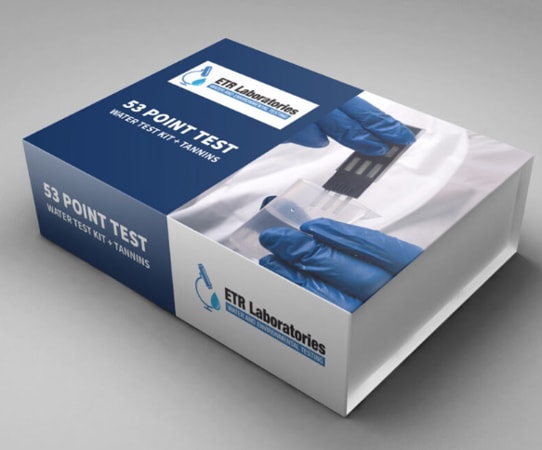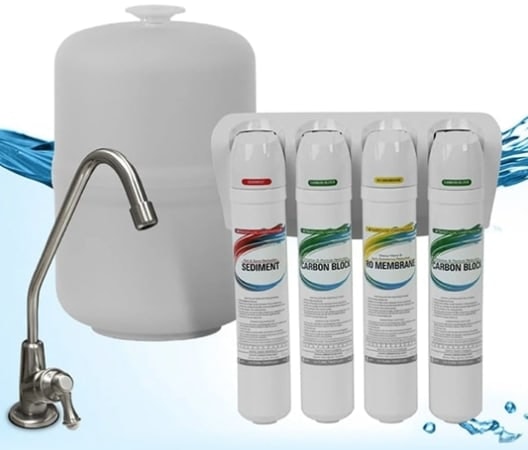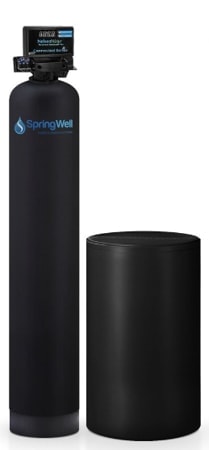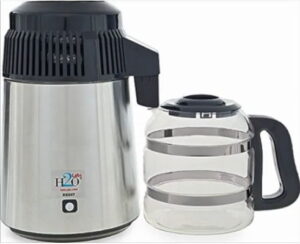Nitrate is a naturally occurring compound and is formed by the combination of nitrogen with oxygen and ozone. Nitrate can enter well water through various channels. The Maximum Contaminate Level is 10.0 milligram per liter (mg/L), and for nitrite, it is 1.0 mg/L. It is evident that nitrite is far more dangerous than nitrates. However, they are not found commonly as compared to nitrates.
This article discuss nitrate contamination sources, its testing and removal from well water.
How to Confirm Nitrate’ Presence in Well Water?
The EPA recommends annual testing for private drinking water wells. Nitrate in well water can be tested with home testing kits or testing laboratory.
Recommended Home Testing Kit: SpringWell’s Water Testing Kit

It is one of the most reliable testing kits for well water. The kit can test 53 contaminants in well water, including nitrates, chloride, fluoride, sulfate, bacteria, TDS, and many other contaminants. The kit is easy to use and comes at an affordable price.
Treatment of Nitrate in Well Water
Let’s look at some of the treatment options available to remove nitrate from drinking water and brings its concentration within the safe limit.
Reverse Osmosis Filtration System
An RO system uses a fine membrane to remove majority of contaminants from drinking water. It is often installed under your kitchen sink for purifying potable water. It produces 99% pure water but it has some drawbacks as well; frequent maintenance and water wastage.
Recommended RO System: SpringWell’s RO System

SpringWell’s RO system is one of the most reliable units you would find on the market. It has 4 filtration stages and can remove up to 99% of contaminants in water. The unit has a pressurized tank and can filter up to 75 gallons in one day.
Apart from an RO membrane, the unit has a sediment filter and two carbon filters to improve drinking water quality. The unit is easy to install and can be plugged into a standard 110V outlet.
Ion Exchange Process: Water Softeners
Most people use a water softener to remove calcium and magnesium from water. However, if you add a potassium-based salt instead of a sodium salt, a standard water softener can remove nitrates from well water too. The resulting water is high in potassium and free from nitrates. Some softeners are also capable of removing iron from well water.
Recommended Salt-Based Water Softener: SpringWell’s Salt Based Water Softener System

SpringWell’s salt-based water softener is recommended to deal with high levels of calcium, magnesium, and nitrates in well water. Make sure you use potassium salt in the water softener.
SpringWell’s water softener is a reliable softener that is easy to install, comes with a lifetime warranty, and is managed by a digital control head.
Water Distillers

Another way to remove nitrate from well water is to use water distillers. Water is heated, and the vapors are cooled to get pure water. It is being used industrially at large scales. Home distillation is very rare as it needs a lot of time and energy. A home distillation pitcher will take 5-6 hours to distill one gallon of water.
Blending
Blending is a community level technique to reduce the nitrate concentration and bring its level below the MCL. Water wells with high nitrate concentration are combined with wells with low nitrate concentration. It is rare but is being practiced in some states of the US and other parts of the world.
What not to do to remove Nitrate from Well Water
- Boiling
- Sediment filtration
- Carbon filtration
- Chlorination
- UV purification
Some other Treatment Methods to Remove Nitrate from Well Water
These methods are recommended when nitrate removal methods don’t work.
- Build a New Well
- Modify your well to dig deeper
- Connect to city water system
Sources of Nitrate Contamination
Levels of nitrate in well water can increase due to the following reasons.
- Improper well construction
- Well located near an animal feedlot
- Overuse of chemical fertilizers and insecticides on crops
- Improper disposal of animal waste near wells
- Septic systems built near wells
- Industrial waste
- Manure heaps near wells
- Natural decomposition of plants near wells
- Organic waste such as scrapes of fruits and vegetables
- Nitrate contamination increase after flooding or heavy rainfall if the wells are shallow, dug, or bored.
- Wells are submerged in rainwater or flood water for a very long time.
- Shallow wells are at greater risk of nitrate contamination. Wells deeper than 100 feet have very fewer chances of nitrate contamination.
Health Effects of Nitrates
Nitrate above the safe limits can cause the following problems.
- Reduce the production of hemoglobin and results in a medical condition known as Methemoglobinemia.
- It can lead to the blue baby syndrome in infants; non-treatment can lead to severe problems like brain cancer, cyanosis, and even death in some cases.
- If pregnant women drink water with excessive nitrate levels, they may give birth to babies with the blue baby syndrome.
- In adults, nitrate’s impacts are far less noticed. They only become visible after years of nitrate exposure.
- Research suggests that adults may suffer from digestive problems, increased blood pressure, and headache.
How to prevent Nitrate from entering in Well Water?
- Construct the well away from contaminated sources
- Get your well inspected annually.
- Get the water tested annually.
- Don’t use fertilizers or chemicals near the drinking water wells.
- Operate and maintain septic systems correctly.
- Get your septic tank clean after 2-3 years.
- Never dispose of chemicals or non-biodegradable materials in drain pipes.
Final Words
Nitrates can be removed from your water effectively without any issues. To achieve this, you need to get your water tested and then buy a relevant filter. Our aim is not only to remove nitrates from water but remove every other harmful contaminant so that you and your family drink pure water and stay healthy and hydrated.
